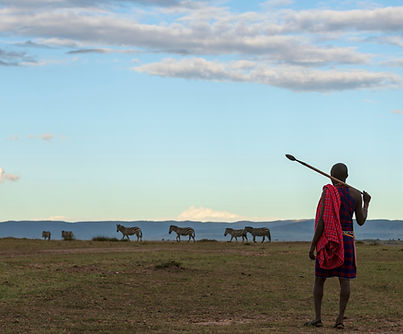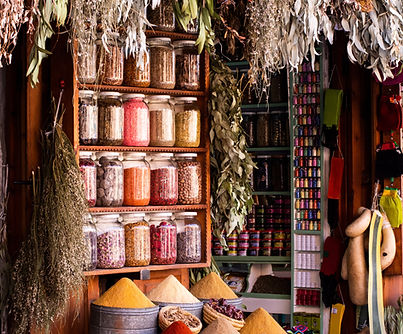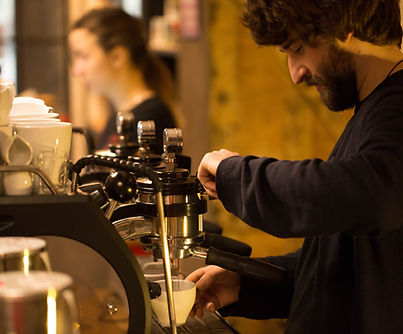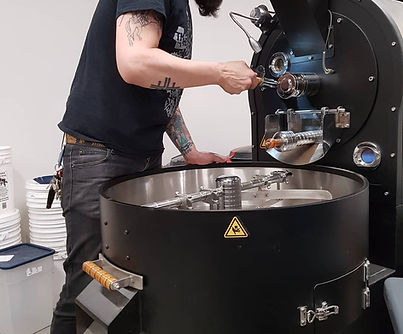
ORIGINS in ETHIOPIA
The story of coffee begins in the highlands of Ethiopia, where the Coffea plant is believed to have originated. It is said that in the 9th century, a goat herder named Kaldi noticed his goats becoming lively and energetic after consuming berries from a certain plant. Intrigued, he shared his discovery with local monks, who then experimented with the berries themselves. They discovered that the berries had a stimulating effect, helping them stay awake during long hours of prayer.

SPREAD to ARABIA
The cultivation and consumption of coffee spread from Ethiopia to the Arabian Peninsula, particularly in Yemen, during the 15th century. The Arabian port city of Mocha (now known as Al-Makha) became a hub for coffee trade, as Yemeni traders began exporting the beans. Coffee quickly gained popularity in the region, not only for its invigorating qualities but also for its unique flavor.

FIRST COFFEEHOUSES
Coffeehouses, known as qahveh khaneh, began to emerge in major Arabian cities such as Mecca, Cairo, and Istanbul. These coffeehouses became social and intellectual centers, where people gathered to drink coffee, engage in lively conversations, discuss politics, share news, and exchange ideas. Coffeehouses played a crucial role in fostering intellectual and cultural movements, becoming important venues for the exchange of knowledge and the birth of new ideas.

EUROPEAN INFLUENCE
Coffee made its way to Europe through trade routes and diplomatic exchanges. The first recorded shipment of green coffee beans arrived in Venice, Italy, in 1615, brought by merchants returning from the Ottoman Empire. Initially, coffee was met with skepticism and faced opposition from some religious figures. However, its popularity quickly grew, and coffeehouses spread across Europe, becoming places for socializing, conducting business, and engaging in intellectual discourse.

SOUTH AMERICA
Coffee was not originally native to South America but was introduced to the region by European colonizers. The first coffee plantations in South America were established in Brazil, which is now the largest coffee producer in the world. Coffee was brought to Brazil in the 18th century, specifically in the state of Pará. South American countries also started establishing coffee plantations during the 19th and early 20th centuries. Colombia, for example, became a significant coffee producer and is renowned for its high-quality arabica beans. Other countries in the region, such as Peru, Ecuador, Bolivia, and Venezuela, also began cultivating coffee.

INDUSTRIALIZATION
The 19th and 20th centuries brought significant advancements in coffee production and trade. With the advent of the industrial revolution, coffee processing became more efficient, enabling mass production and widespread availability. Innovations such as mechanical hulling, improved roasting techniques, and vacuum-sealed packaging helped preserve the flavor and quality of green coffee beans during transportation.

COFFEE INDUSTRY
Today, the coffee industry has become a global enterprise, with green coffee beans sourced from various regions around the world. Coffee-producing countries like Brazil, Colombia, Vietnam, Ethiopia, and Honduras play major roles in supplying green coffee beans to meet the demand of consumers worldwide. Roasters and coffee enthusiasts carefully select green coffee beans based on their origin, variety, processing methods, and flavor profiles, ensuring a diverse range of coffee experiences for enthusiasts.
Green coffee beans continue to be the primary form of coffee traded internationally. They are transported, stored, and roasted locally to unlock their unique flavors and aromas. Whether through traditional brewing methods, specialty coffee shops, or home brewing, the journey of green coffee beans from their origins to the cup continues to captivate coffee lovers and connect cultures across the globe.

SPECIALTY COFFEE
Specialty coffee refers to high-quality coffee that is sourced, roasted, and brewed with exceptional attention to detail and craftsmanship. The history of specialty coffee can be traced back to the late 20th century when a movement emerged to celebrate and promote the unique qualities of coffee.
Origins of the Specialty Coffee Movement: In the 1960s and 1970s, the coffee industry experienced a shift towards mass production and commercialization. Coffee beans were often treated as a commodity, with little emphasis on their distinct flavors and origins. However, a group of coffee enthusiasts and professionals began to advocate for a different approach.
Today, the specialty coffee industry continues to grow and evolve. It has become a global phenomenon, with specialty coffee shops, micro-roasters, and dedicated enthusiasts spread across different countries. The movement has influenced the entire coffee industry, from farmers and exporters to roasters and baristas, with a focus on sustainability, ethical sourcing, and the pursuit of exceptional coffee experiences.

THIRD WAVE COFFEE
The term "Third Wave Coffee" refers to a movement within the specialty coffee industry that emerged in the early 2000s. It represents a shift in how coffee is sourced, roasted, prepared, and consumed, with a focus on quality, sustainability, and the appreciation of coffee as an artisanal product.
The characteristics and principles of Third Wave Coffee include:
Direct Trade and Relationship Building: Third Wave Coffee places great importance on direct relationships between coffee producers, exporters, and roasters. This approach emphasizes fair and transparent trade practices, ensuring that farmers receive fair compensation for their crops and promoting sustainable farming practices. By establishing direct trade relationships, roasters can have better control over the quality and traceability of the coffee they source.
Quality and Specialty Coffee: Third Wave Coffee is characterized by a strong emphasis on quality and the pursuit of specialty-grade coffee. Specialty coffee refers to coffee beans that are of exceptional quality, scoring 80 points or above on the Specialty Coffee Association (SCA) scoring scale. Third Wave Coffee enthusiasts seek out unique flavor profiles, distinct origins, and carefully cultivated beans that showcase the best qualities of the coffee.
Lighter Roasting: Unlike traditional dark roasts, Third Wave Coffee tends to favor lighter roasting profiles. Lighter roasts preserve more of the intrinsic flavors and nuances of the coffee beans. This allows the natural characteristics of the beans, including their acidity, sweetness, and floral or fruity notes, to shine through. Lighter roasts are often associated with more complex and vibrant flavor profiles.
Single-Origin and Micro-Lot Coffees: Third Wave Coffee celebrates the diversity of coffee-growing regions and highlights the unique flavors associated with specific origins. Single-origin coffees are sourced from a single farm or a specific region, allowing coffee enthusiasts to appreciate the distinct characteristics of coffee from different terroirs. Micro-lots, which are small batches of coffee from specific sections or varietals within a farm, are highly valued for their exceptional quality and limited availability.
Precision Brewing Methods: Third Wave Coffee places importance on precision and craftsmanship in brewing methods. Baristas and coffee enthusiasts often use manual brewing techniques, such as pour-over, Aeropress, or espresso-based methods, to carefully control variables such as water temperature, brewing time, and coffee-to-water ratios. This approach allows for a more nuanced extraction and enhances the flavors and aromas of the coffee.
Education and Consumer Engagement: Third Wave Coffee places an emphasis on educating consumers about the coffee they are consuming. Coffee shops and roasters provide information about the origin, processing methods, and flavor profiles of the coffee they offer. They engage with customers through cupping sessions, brewing classes, and other educational events to help them develop an appreciation for the complexity and diversity of coffee.
The Third Wave Coffee movement has influenced the coffee industry globally, leading to increased awareness and appreciation for high-quality, sustainable, and ethically sourced coffee. It has elevated the standards of coffee production, roasting, and brewing, while fostering a deeper connection between coffee producers, roasters, baristas, and consumers.

DIRECT TRADE
Direct trade and relationship coffee are two approaches within the specialty coffee industry that emphasize direct relationships between coffee producers and buyers. Both concepts aim to create more transparent, sustainable, and mutually beneficial partnerships. Here's a closer look at each of them:
Direct Trade: Direct trade is a sourcing model in which coffee buyers (typically roasters) establish direct relationships with coffee producers, bypassing traditional intermediaries such as importers or exporters. This approach focuses on building long-term partnerships based on trust, transparency, and fair practices. Here are key aspects of direct trade:
Transparency and Traceability: Direct trade encourages transparency throughout the supply chain. Buyers often visit coffee farms, engage in open communication with producers, and gain firsthand knowledge of farming practices, processing methods, and the social and environmental conditions on the farm. This transparency enables traceability, allowing buyers and consumers to know exactly where the coffee comes from.
Fair Pricing: Direct trade aims to provide fair compensation to coffee producers. By eliminating middlemen, a larger portion of the revenue can go directly to the farmers. This enables them to invest in sustainable farming practices, improve their livelihoods, and produce high-quality coffee.
Quality Focus: Direct trade relationships often prioritize quality. Close collaboration between buyers and producers allows for better control over the coffee's cultivation, processing, and post-harvest practices. This emphasis on quality can lead to improved flavor profiles and higher-grade specialty coffees.
Social and Environmental Sustainability: Direct trade partnerships often prioritize social and environmental sustainability. Buyers work closely with producers to implement sustainable farming practices, improve working conditions, and support community development initiatives. This approach promotes the well-being of both the farmers and the environment.
Relationship Coffee: Relationship coffee builds upon the principles of direct trade but places additional emphasis on long-term, mutually beneficial relationships between buyers and producers. Relationship coffee extends beyond a single transaction and focuses on ongoing support and collaboration. Key elements of relationship coffee include:
Long-Term Partnerships: Relationship coffee involves establishing long-lasting partnerships between coffee buyers and producers. This allows for greater stability, trust, and shared knowledge over time. Roasters commit to purchasing coffee from specific producers or cooperatives on a consistent basis, providing financial security and stability for the farmers.
Shared Goals and Collaboration: Relationship coffee is built on shared values and goals. Buyers and producers collaborate closely, sharing expertise, knowledge, and resources to improve coffee quality, sustainability, and market access. This collaborative approach can involve providing technical assistance, training, and access to resources for farmers to enhance their farming practices.
Quality Improvement Programs: Relationship coffee often includes quality improvement programs. Buyers may work with producers to implement quality control measures, conduct cupping sessions, and provide feedback on flavor profiles. This helps farmers understand market demands and make continuous improvements in their coffee production.
Impact and Development Initiatives: Relationship coffee often extends beyond the economic aspects and includes social and community development initiatives. Buyers may support projects related to education, healthcare, infrastructure, and other areas identified as priorities by the coffee-producing communities. This approach contributes to the overall well-being and development of the farming communities.
Both direct trade and relationship coffee aim to establish more equitable, sustainable, and transparent relationships between coffee producers and buyers. These approaches prioritize quality, social responsibility, and environmental stewardship, while fostering long-term partnerships that benefit all parties involved in the coffee supply chain.

CUPPING and QUALITY ASSESSMENT
Cupping is a standardized method of tasting and evaluating coffee that is widely used in the specialty coffee industry. It is a sensory evaluation process that allows coffee professionals to assess the quality, flavors, and aromas of different coffee samples. Cupping plays a crucial role in the quality assessment of coffee and helps in the selection of beans for specialty coffee offerings. Here's an explanation of the cupping process and its significance:
Preparation: Before the cupping session, coffee samples, typically in the form of whole beans, are carefully roasted to a specific degree to showcase their best flavors. The coffee is ground to a uniform size and stored in small, identical cups called "cupsping bowls." The cups are labeled, and the coffee samples are kept anonymous to maintain objectivity during the tasting.
Evaluation Process: The cupping process involves several steps that allow for systematic evaluation of coffee samples:
Fragrance Assessment: The coffee grounds are smelled to evaluate their fragrance, capturing the aromatic notes released by the dry coffee.
Water Pouring: Hot water is poured onto the coffee grounds, allowing them to steep for a specific duration. This extraction process helps in releasing the coffee's flavors and aromas.
Breaking the Crust: After steeping, a thin layer of grounds forms on the surface, known as the "crust." The crust is gently broken by stirring the coffee with a spoon, releasing additional aromas.
Aroma Assessment: The aroma of the coffee is evaluated by smelling the fragrance released from the cup after breaking the crust. Cuppers take note of the various scents, such as floral, fruity, earthy, or nutty aromas.
Slurping and Tasting: Using a spoon, cuppers take a small amount of coffee from the cup, slurp it with force to aerate the liquid, and distribute it across the palate. This allows for a more comprehensive evaluation of the taste, acidity, body, and flavor characteristics of the coffee.
Flavor Assessment: Cuppers assess the flavors present in the coffee, noting any distinct characteristics like fruity, chocolatey, citrusy, or floral flavors. They also evaluate the balance and complexity of the flavors.
Aftertaste and Finish: The aftertaste, which is the lingering taste left in the mouth after swallowing, is assessed for qualities like sweetness, bitterness, or acidity. The finish refers to the final impression of the coffee's taste.
Scoring and Evaluation: Throughout the cupping process, cuppers assign scores and provide detailed notes for each coffee sample, considering factors such as aroma, flavor, acidity, body, balance, and overall quality. The scores and notes help in determining the quality and potential of the coffee, influencing purchasing decisions and identifying the most desirable beans for specialty coffee offerings.
Quality Control and Consistency: Cupping is an essential quality control measure for coffee roasters and buyers. It ensures consistency in the flavor and quality of the coffee they source and roast. Cupping also allows for the identification of defects, inconsistencies, or potential improvements in the coffee, leading to better sourcing decisions and fostering relationships with coffee producers.
Transparency and Communication: Cupping provides a common language for coffee professionals to communicate about the sensory attributes and qualities of coffee. It facilitates meaningful discussions between coffee producers, buyers, and consumers, promoting transparency and understanding throughout the coffee supply chain.
Overall, cupping is a vital tool in the specialty coffee industry for evaluating and appreciating the unique flavors, aromas, and characteristics of coffee. It helps maintain and improve quality standards, enables effective sourcing decisions, and contributes to the development of the vibrant and diverse specialty coffee market.

ORIGIN and TERROIR
Origin and terroir play a significant role in the specialty coffee industry, as they contribute to the unique flavors and characteristics found in coffee. Here's a closer look at the importance of origin and terroir in the world of coffee:
Origin: The term "origin" in coffee refers to the specific geographic region or country where the coffee beans are grown. Different origins have distinct climates, altitudes, soils, and cultivation practices, which greatly influence the flavor and quality of the coffee.
Flavor Profiles: Coffees from different origins have their own flavor profiles. For example, coffees from Ethiopia are often known for their floral and fruity notes, while those from Colombia may exhibit balanced acidity and nutty undertones. Each origin presents a unique combination of flavors that can be explored and appreciated.
Cultural Significance: Coffee origins often have rich cultural histories and traditions associated with coffee cultivation and processing. They provide a connection to the people and communities involved in the production of coffee, adding depth and significance to the coffee-drinking experience.
Direct Trade and Relationships: Specialty coffee often emphasizes direct trade relationships between coffee producers and roasters. By focusing on specific origins, roasters can establish long-term relationships with farmers, ensuring fair prices, sustainable practices, and traceability in the supply chain.
Terroir: Terroir refers to the environmental factors that contribute to the distinctive characteristics of coffee. It includes the soil composition, altitude, climate, rainfall patterns, and other natural conditions in a specific coffee-growing region.
Flavor Expression: Terroir influences the flavor profile of coffee by affecting the growth and development of the coffee plant. Factors like altitude and temperature impact the maturation process of the coffee cherries, influencing their sugar content, acidity, and flavor development.
Altitude: The altitude at which coffee is grown has a significant impact on its flavor. Higher altitudes often result in slower cherry maturation, leading to denser beans with more complex flavors and higher acidity. Coffees grown at lower altitudes may have more body and sweetness.
Soil and Climate: The composition of the soil and the climate in a coffee-growing region contribute to the nutrients available to the coffee plant. Different soil types and rainfall patterns affect the coffee plant's ability to absorb specific minerals, influencing the flavors and characteristics expressed in the beans.
Cupping and Evaluation: Coffee cupping, the sensory evaluation process, allows professionals to assess and identify the unique flavors and attributes associated with specific origins and terroirs. Cupping sessions help in understanding and appreciating the flavors that arise from different growing conditions.
Consumer Appreciation: Origin and terroir provide coffee consumers with the opportunity to explore a wide range of flavors and experiences. By understanding the impact of origin and terroir on coffee, consumers can select coffees that align with their preferences and develop a deeper appreciation for the diverse world of specialty coffee.
Origin and terroir contribute to the complexity, diversity, and quality of coffee. They allow for a deeper understanding of the factors that shape the flavors and characteristics of the beans, fostering a greater appreciation for the art and science of coffee production.

MICRO ROASTERS and SINGLE ORIGIN
Micro-roasters and single-origin coffees are two key elements of the specialty coffee industry. Let's explore what they entail:
Micro-Roasters: Micro-roasters are small-scale coffee roasters that focus on sourcing, roasting, and selling specialty-grade coffee. They typically roast smaller batches of coffee beans, allowing for greater control over the roasting process and the ability to highlight the unique characteristics of each coffee.
Benefits of Micro-Roasters:
Quality and Attention to Detail: Micro-roasters prioritize quality and craftsmanship, carefully selecting high-quality beans and employing precise roasting techniques to bring out the best flavors in the coffee.
Freshness: Micro-roasters often roast coffee in small quantities to ensure freshness. This means that the coffee reaches the consumer shortly after roasting, preserving its optimal flavors and aromas.
Single-Origin Coffees: Single-origin coffees are sourced from a specific region, farm, or even a particular lot within a farm. These coffees are celebrated for their distinct flavors, reflecting the unique characteristics of their origin, such as the soil, climate, altitude, and cultivation practices.

ROBUSTA
Robusta coffee is a type of coffee that is known for its high caffeine content and strong, bold flavor. It is one of two primary species of coffee plants, the other being Arabica.
Robusta coffee is primarily grown in Africa and Asia, with Vietnam being the largest producer of Robusta beans in the world. The coffee plant produces larger, rounder beans than Arabica beans, and they have a more uniform shape with no crease.
Robusta coffee is often described as having a harsh, bitter flavor with notes of wood or leather. It has a higher acidity than Arabica coffee and is often used in blends to add depth and complexity to the flavor profile. Robusta beans are also commonly used in instant coffee and espresso blends because of their high caffeine content and ability to produce a thick, creamy crema.
While Robusta coffee is generally considered to be of lower quality than Arabica coffee, it is also more affordable and easier to grow in harsher conditions. Some coffee lovers prefer the strong, bold flavor of Robusta coffee and it is a popular choice in many countries around the world.

LIBERICA
Liberica coffee is a type of coffee that is grown primarily in West and Central Africa, as well as in the Philippines and Malaysia. It is one of the three main species of coffee plants, alongside Arabica and Robusta.
Liberica coffee beans are larger than Arabica or Robusta beans, and they have an irregular shape. They are typically roasted to a medium to dark roast, and they have a distinctive, bold flavor that is sometimes described as woody or smoky. Liberica coffee also has a slightly floral aroma, with notes of fruit and nuts.
Liberica coffee is not as widely known or popular as Arabica or Robusta coffee, but it has a devoted following among coffee lovers who appreciate its unique flavor and aroma. It is also sometimes used in blends with other types of coffee to add complexity to the flavor profile. However, Liberica coffee is a relatively rare and expensive type of coffee due to its limited availability and production.

EXCELSA
Excelsa is a type of coffee that is often classified as a variety of Arabica coffee, but it has a distinct flavor profile that sets it apart from other Arabica beans. Excelsa coffee is grown primarily in Southeast Asia, particularly in countries like Vietnam, Laos, and the Philippines.
Excelsa coffee beans are elongated and oblong in shape, with a unique asymmetrical curved crease. They are typically a medium to dark roast, and they have a tart, fruity flavor that is sometimes compared to that of a grapefruit or a cherry. Excelsa coffee also has a unique aroma, with notes of spice and a hint of smokiness.
While Excelsa coffee is not as well-known as other types of coffee, it is gaining in popularity among coffee lovers who are looking for new and interesting flavors. It is also sometimes used in blends with other types of coffee to add complexity to the flavor profile.

ARABICA
Arabica coffee is a type of coffee that is highly prized for its delicate, complex flavor and low acidity. It is one of two primary species of coffee plants, the other being Robusta.
Arabica coffee is native to the highlands of Ethiopia and is now grown in many countries around the world, including Colombia, Brazil, Ethiopia, and Kenya. The coffee plant produces small, oval-shaped beans that have a curved crease on one side. These beans are harvested by hand and then roasted to create the distinctive flavor and aroma that Arabica coffee is known for.
Arabica coffee beans have a lower caffeine content than Robusta beans, and they are often described as having a sweet, fruity flavor with notes of chocolate, caramel, and nuts. They also have a delicate aroma and a smooth, velvety texture.
Due to its high quality and complex flavor profile, Arabica coffee is often more expensive than other types of coffee, and it is commonly used in specialty coffee shops and high-end cafes. It is also a popular choice for home brewing and can be found in many different roasts, from light to dark.
